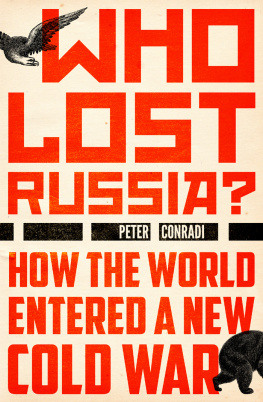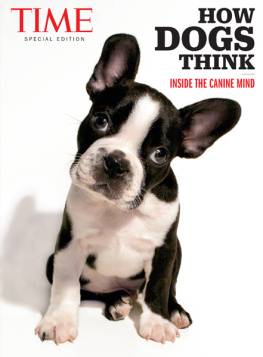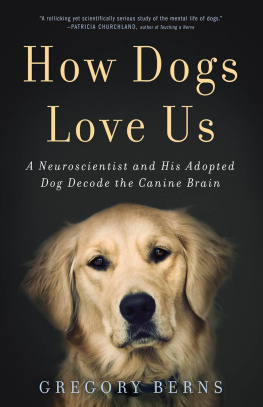

CONTENTS
PREFACE
To Cloudy, Sky, Bradley and Max: four collies
W e acquired Cloudy, the first in a succession of four collies, in 1987. A six-week-old, blue-eyed puppy little enough to hold on the palm of one hand, she was hiding in the stables with the rest of her litter when my partner Jim picked her up. She at once put her head trustingly against his chest, closing her eyes just as Jim closed his. Here was love at first sight. Cloudy reappears in this book under the entry Iris Murdochs Pyrrhus and other dogs. She was a blue-merle collie from a Radnorshire farm. Blue merles are genetically albino, and so have silver-and-white rather than black-and-white coats, and (often) blue rather than brown eyes. It is said that some Welsh Baptist farmers in the nineteenth century feared the blue merles penetrating gaze, and would drown these pups soon after birth.
Cloudy grew up to be beautiful, affectionate, energetic and intelligent: a typical border collie. Immediately after a walk of twenty miles once you factored in the additional distance she ran for the ball she still tended to race a few times around the perimeter of our fields in Wales, expressing sheer joy and the love of movement. Her propensity for hiding behind trees in Battersea Park before running athletically to catch and return balls attracted the memorable comment from one spectator: Well bugger me said the duchess. We learned too late that we were over-exercising her. She was nearly fourteen when her daily dose of Metacam to alleviate arthritic pain caused kidney failure and we had to request the vets help to see her off.
She understood a hundred or so words or commands, and would arrange herself with her bottom lowered to help us pick her up. She learned to push apart patio windows by moving her muzzle sideways, and once after attentively watching me collect stones in a brook to create a rill plunged her head under water to bring me stones herself. Her remarkable habit of barking angrily at the words Mrs Thatcher got her photo and story on to the centre pages of the Evening Standard. Cloudy also knew how to wait in anticipation, understanding the future tense. When her auntie was due to come and take her out for a walk, we could simply say Daphne, later!, and shed go to the top of the stairs and wait for the sound of Daphnes car (and yes, she could distinguish the sounds different cars made).
Cloudy loved chasing airborne kites and skeetered about wildly, mirroring the movements she witnessed in the sky. This triggers a reflection on how incalculably different even dogs of the same breed can be. Kites so terrified her successor, a pure white collie called Sky, that on one occasion she ran a mile home across the South Circular Road and we lost her for two hours. Sky was independent-spirited as a princess and wilful to the point of recklessness, with a lifelong habit of finding plastic to chew until she finally and fatally perforated her gut. A week of unsuccessful surgery followed before the vet helped her on her way. We buried her in our orchard. She was just five.
Her brindled brother Bradley, acquired from the same litter, was the runt, and timorous to a fault. Even flies caused him to flee from a room, and he never outgrew a certain daffiness. He barked wildly at the sound made by the rotation of a salad spinner; and his habit of greeting people effusively prompted one friend to name him Sir Licksalot. When we dredged our pond of weed in Wales, he acted as foreman, issuing strange instructions, always pulling wildly on the rope in exactly the wrong direction. His character improved after his sister died, when he no longer had to compete for attention or affection; and he lived to be fourteen, when a cancer in his gut migrated to his lung.
His successor, our fourth and current collie, called Max, has a classic glossy black coat, with a white blaze down his muzzle, white ruff, white paws and white tip to his tail. And beautiful amber eyes. He invents games, like making believe that a stone is really a baby mouse, and squealing at it. Puppy-like, he enjoys frantically herding air bubbles in the brook or paddling his fleece manically between his rear legs before tossing it in the air. He loves chasing planes and will also try to round up swallows who look as if they are playing with him, hawking low for insects just above his head. He will inch his way under any low-slung bed to hide as if in a den. (When he lies down, his posture exactly recalls a cats, with rear legs fully extended.)
Max though like timid Bradley the runt of the litter is as brave as a lion. Little seems to daunt him. True, he prefers Wales to London and used to throw up accordingly when our car reached the Cromwell Road. Once when he was very young we made the mistake of putting him in kennels, where he got no love or attention. And now he waits anxiously by any luggage he spots, lest he be forgotten or left behind when we travel. These habits apart, little frightens Max. He loves most human beings and, even as a pup, would wrap his front paws around strangers and try to hug them. He can balance magically on both front legs for half a second when he pees a feat we have never before heard of; or on his rear legs for other purposes.
Each of these four very different collie dogs has enriched and transformed our lives. Loving them made me curious; and so this book is dedicated to all of them: to Cloudy, Sky, Bradley and Max.

INTRODUCTION: ON NOT WADING THROUGH TREACLE
W ithout music life would be a mistake, said the philosopher Nietzsche. But life, so it seems to me, might be hard without dogs too; and if I had the impossible task of choosing between letting go of music or letting go of dogs, I might conceivably choose to relinquish music, albeit with some anguish. It is wonderful to inhabit a world containing both.
How our love for dogs and theirs for us makes life bearable is the inspiration for this book, an anthology of interesting dogs in life and literature, and of dog-related prose and poetry that I enjoy.
The mutual love between man and dog frequently leads to myth-making, and not everything written about dogs deserves to be believed. We can, for example, read on the internet of an impressive dog named Delta, discovered during the excavations of Pompeii (or possibly Herculaneum) and preserved by the hardened volcanic ash. Delta was found hunched over a small boy, his master, apparently trying to save him from the disaster. A collar around his neck revealed not only the dogs name, Delta, and his masters (Servinus), but also that the faithful hound had saved the boy three times before, once from drowning, again from four robbers, and finally from a wolf set on attacking him at the sacred grove of Diana. Moreover, Deltas heroism lasted until the end: his corpse, frozen in time, will forever be protectively draped over the body of his beloved Servinus, a sort of living monument to devotion and fidelity.
The difficulty is that this story is not authenticated anywhere and appears to be an early urban myth. Nor is it by any means alone; there are many others like it. The tales of Gelert, Foxie and Greyfriars Bobby, all of which gain entries here, are each at least in part legends of canine loyalty that flatter and console us, sentimental fictions that endorse our pious belief in our central importance to the universe. Many such entries in this book stem from the nineteenth century, when the Victorians tended to beatify their dogs.
Next page













